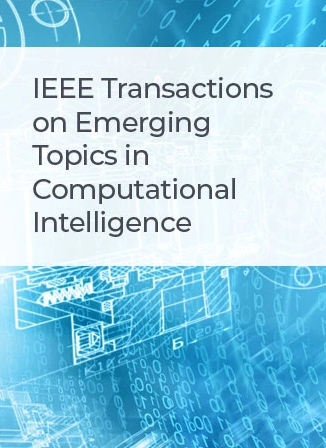Smart Energy Hub Frequency Control-Based Machine Learning
IF 5.3
3区 计算机科学
Q1 COMPUTER SCIENCE, ARTIFICIAL INTELLIGENCE
IEEE Transactions on Emerging Topics in Computational Intelligence
Pub Date : 2025-04-10
DOI:10.1109/TETCI.2025.3551991
引用次数: 0
Abstract
The increasing variety of energy conversion units and storage equipment connected to the multi-energy system, along with the uncertain factors posed by distributed wind and photovoltaic power generation, have made the energy flow structure of the system more complex. This complexity has created significant challenges for the frequency regulation of traditional energy hub systems. One of the characteristics of a microgrid (MG) is the use of combined heat and power (CHP) systems to generate both electrical and thermal energy at the same time. This can boost the system's dependability, efficiency, and economic performance. As a CHP's ramping capability makes it a useful tool for monitoring and controlling the MG's frequency, it will be employed in this research to achieve this goal. The complexity of the system's dynamics and set tasks throughout the course of the performance period necessitates advanced control structures for the MG with CHP systems. To address the challenges of controlling in MG with CHP systems, this research introduces a novel control structure based on deep reinforcement learning and single input interval type-2 fuzzy fractional-order proportional integral (SIT2-FFOPI) for this system. The SIT2-FFOPI serves as the main controller, with its fundamental parameters established through the utilization of the Improved Salp Swarm Algorithm (ISSA) optimization technique. An adaptive deep deterministic policy gradient (DDPG)-based actor-critic system has been developed to enhance the main controller's learning potential, thereby enabling it to more effectively address control challenges in the isolated MG. The efficacy of the suggested approach in real-time was evaluated through simulations carried out utilizing an OPAL-RT-based Hardware-in-the-Loop (HiL) configuration. As a result of this study, it was determined that the proposed controller for load disturbance, renewable energy sources (RES) power changes, and contingency circumstances in MG outperforms other controllers in terms of performance.智能能源集线器频率控制的机器学习
接入多能系统的能量转换单元和存储设备种类越来越多,加上分布式风电和光伏发电带来的不确定性因素,使得多能系统的能量流结构更加复杂。这种复杂性给传统能源枢纽系统的频率调节带来了重大挑战。微电网(MG)的特点之一是使用热电联产(CHP)系统同时产生电能和热能。这可以提高系统的可靠性、效率和经济性能。由于CHP的爬坡能力使其成为监测和控制MG频率的有用工具,因此将在本研究中使用它来实现这一目标。在整个运行过程中,系统的动力学和任务设置的复杂性需要先进的热电联产系统控制结构。为了解决热电联产系统在MG控制中的挑战,本研究引入了一种基于深度强化学习和单输入区间2型模糊分数阶比例积分(SIT2-FFOPI)的新型控制结构。SIT2-FFOPI作为主控制器,利用改进的Salp群算法(ISSA)优化技术建立基本参数。开发了一种基于自适应深度确定性策略梯度(DDPG)的actor-critic系统,以增强主控制器的学习潜力,从而使其能够更有效地解决孤立MG中的控制挑战。通过利用基于opal - rt的硬件在环(HiL)配置进行的仿真,实时评估了所建议方法的有效性。研究结果表明,针对负载扰动、可再生能源(RES)功率变化和MG中的突发情况,所提出的控制器在性能上优于其他控制器。
本文章由计算机程序翻译,如有差异,请以英文原文为准。
求助全文
约1分钟内获得全文
求助全文
来源期刊

IEEE Transactions on Emerging Topics in Computational Intelligence
Mathematics-Control and Optimization
CiteScore
10.30
自引率
7.50%
发文量
147
期刊介绍:
The IEEE Transactions on Emerging Topics in Computational Intelligence (TETCI) publishes original articles on emerging aspects of computational intelligence, including theory, applications, and surveys.
TETCI is an electronics only publication. TETCI publishes six issues per year.
Authors are encouraged to submit manuscripts in any emerging topic in computational intelligence, especially nature-inspired computing topics not covered by other IEEE Computational Intelligence Society journals. A few such illustrative examples are glial cell networks, computational neuroscience, Brain Computer Interface, ambient intelligence, non-fuzzy computing with words, artificial life, cultural learning, artificial endocrine networks, social reasoning, artificial hormone networks, computational intelligence for the IoT and Smart-X technologies.
 求助内容:
求助内容: 应助结果提醒方式:
应助结果提醒方式:


